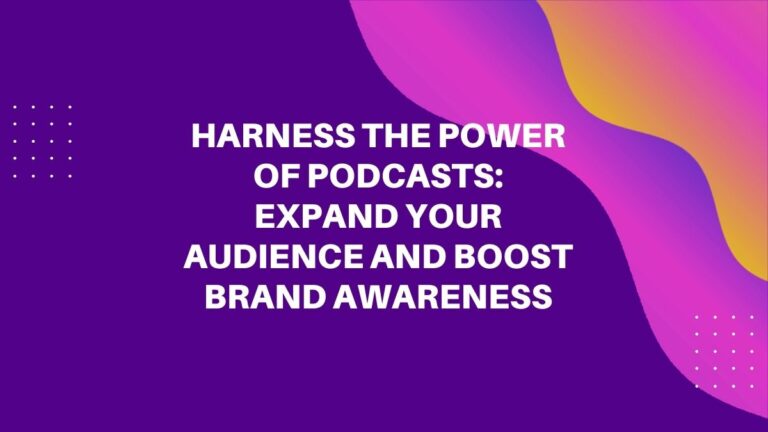
Revolutionizing Product Discovery with Visual Search
The way we search for products is evolving. Consumers are no longer limited to typing keywords; they use images to find exactly what they want faster and more accurately than ever.
Imagine walking down the street and spotting a pair of sneakers you love. You don’t know the brand, model, or where to buy them. Instead of searching endlessly with vague keywords like “white sneakers with black stripes,” you snap a picture. Visual search technology finds the exact shoes—or similar styles—ready for purchase within seconds.
Welcome to the era of visual search technology, where a picture is worth more than a thousand words—it’s a direct gateway to discovering and purchasing products in seconds. From AI-powered image recognition to visual search optimization, businesses that harness this technology are staying ahead of the curve. If you’re not optimizing for visual search, you could miss out on a massive opportunity to attract and convert customers.
What is Visual Search and How Does It Work?
Visual search allows users to search for products using images instead of text. Rather than typing a description, a customer can upload a picture or take a snapshot, and AI-powered search engines will find visually similar items.
How Visual Search Works
- Image Processing
- The system scans an image to understand its key characteristics and analyzes its shapes, colors, patterns, and textures.
- AI Image Recognition
- Advanced AI and machine learning algorithms compare the uploaded image to an extensive product database, identifying similarities.
- Search Results
- The user receives highly relevant product recommendations based on their image, removing the guesswork from shopping.
Visual search eliminates ambiguity unlike traditional text-based searches, which rely on keywords. A shopper may not know how to describe an item accurately, but with visual search, they don’t have to—they can show a picture.
Why Visual Search is Gaining Momentum

Several factors are driving the rapid rise of image-based search:
1. Consumer Behavior is Changing
Shoppers, especially Gen Z and Millennials, want instant gratification. They expect to find products quickly without guessing the right search terms.
Example: A user sees a celebrity wearing sunglasses on Instagram. Instead of typing “black oversized sunglasses with gold frame,” they upload the image and instantly find similar pairs available for purchase.
Visual search bridges the gap between online and offline shopping, making product discovery effortless.
2. AI and Image Recognition Have Improved
Machine learning and deep learning allow visual search to recognize complex details like logos, textures, and unique patterns with incredible accuracy.
Retail giants like Google, Amazon, and Pinterest have invested heavily in AI-powered image recognition, making it more accessible for everyday users.
3. E-Commerce is More Competitive Than Ever
With millions of products online, standing out is more complex than ever. Visual search gives brands an edge by ensuring products are discoverable, even when users don’t know exactly what they want.
For brands, visual search optimization means higher visibility, better engagement, and more conversions.
Major Platforms Driving Visual Search Technology
1. Google Lens
Users can take a photo of an object, and Google’s AI will provide search results with shopping links, making product discovery seamless.
2. Pinterest Lens
A pioneer in visual search, Pinterest’s AI analyzes uploaded photos and pulls up visually similar products and related pins—a powerful tool for retailers.
3. Amazon StyleSnap
Amazon allows shoppers to upload images of clothing and accessories, and AI will match them with similar items available for purchase.
4. Snapchat’s Visual Search with Amazon
Snapchat users can scan a product using their camera and instantly receive Amazon shopping links, making impulse shopping easier than ever.
5. Instagram and Facebook AI Search
Meta is testing AI-driven visual search tools to enhance shopping on Instagram and Facebook, making it easier for users to find and buy products based on images.
Optimizing Your Visual Content for Searchability
If you want your products to be discoverable through visual search, you must optimize them properly. Here’s how:
1. Use High-Quality Product Images
AI image recognition relies on clarity to analyze details accurately. Blurry or pixelated photos won’t perform well.
✔ Use multiple angles (front, back, close-up, lifestyle shots).
✔ Keep backgrounds clean and uncluttered for better AI detection.
✔ Maintain consistent lighting to avoid variations in color representation.
2. Add Relevant Image Metadata
Search engines don’t “see” images as humans do—they rely on metadata to understand them.
✔ Alt text with detailed product descriptions.
✔ File names that describe the product (e.g., “black-leather-handbag.jpg” instead of “IMG12345.jpg”).
✔ Structured data markup to help search engines categorize images properly.
3. Implement Visual Search APIs on Your Website
If you run an e-commerce store, integrating visual search tools can boost engagement and conversions.
Popular Visual Search APIs:
- Google Cloud Vision API
- Pinterest Visual Search API
- Amazon Rekognition
- Clarifai AI

4. Automate Product Tagging with AI
Instead of manually tagging thousands of images, AI can automate product tagging by assigning attributes like:
✔ Color (e.g., “navy blue”)
✔ Material (e.g., “leather”)
✔ Pattern (e.g., “floral”)
This improves searchability and personalization, ensuring customers find precisely what they want.
5. Optimize for Pinterest and Google Lens
Since Pinterest and Google Lens are widely used for visual search, your images should be optimized for these platforms.
✔ Create Pinterest-friendly pins with searchable descriptions and hashtags.
✔ Ensure Google-indexed images have clear alt text and structured data.
✔ Maintain consistent branding so products stand out in search results.
How Visual Search is Evolving—and What It Means for You
Visual search is just starting, and the next wave of innovation will take it to a new level. Soon, shopping won’t just be about snapping a picture to find a product—it’ll be an immersive, interactive experience.
Imagine pointing your phone at a piece of furniture and instantly seeing how it looks in your living room. That’s where AI-powered Augmented Reality (AR) is headed. AR allows shoppers to visualize products in their space or try on clothes virtually before hitting “Buy Now.”
Could you combine voice search with visual search? Instead of typing or uploading an image, you could say, “Find me a jacket like this,” while showing your camera a picture. AI would do the rest, pulling up matching products in seconds.
But it doesn’t stop there. 3D object recognition is making huge strides, meaning AI will soon be able to identify real-world objects—not just flat 2D images. This could completely change how people shop for everything from home decor to sneakers, making the online-to-offline shopping experience even more seamless.
Finally, more intelligent AI algorithms are on the way, capable of detecting even the most minor details—like the stitching on a handbag or the texture of a fabric—to deliver more accurate product matches than ever before.
Brands are now preparing for these changes, shaping visual commerce’s future. The question is, are you ready for what’s next?

Visual Search is the Future of Shopping
The days of typing vague search terms and hoping for the right results are fading. Visual search is the future of e-commerce—offering a more innovative, faster, and more intuitive way for consumers to find what they need.
For businesses, this means:
- A competitive advantage in a rapidly evolving digital marketplace.
- More engagement from users who prefer images over text.
- Higher conversions by making product discovery effortless.
Digital Results would be happy to help you with your digital marketing needs. Get in touch for a free 30-minute consultation—one of our experts will walk through how we can help optimize your search engine optimization (SEO).
Ready to Grow Your Search Engine Results?
Let Digital Results assist you in your SEO strategy and help
deliver the search engine results you need.






